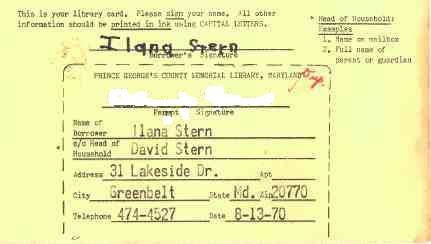|
The "newspaper game" at this stage consisted of searching for known short words (including connecting words) in newspaper headlines or ads, circling them and having the children read them out loud. Headlines were particularly useful because first letters in them are often capitalized, giving a child who cannot yet tell left from right a clue about which side the word begins on. For a fairly long time the children were uncertain in identifying the "beginning" of words: one persistent source of ambiguity was ON which becomes NO not only when reversed but also (in capitals) when viewed upside down. Even when Allon was four and a half years old and already reading fairly freely, he would still occasionally write his name in mirror-image letters from right to left! Flash cards were extensively used in teaching words. Some were handwritten with felt markers, others contained words clipped from newspapers and stuck to the card with transparent tape. When we started teaching nouns, we used a set of cards in which each word was repeated twice. The first time it appeared the card would also have a small "cheater" picture in the lower right corner--BUS, CAR, HAT, CAT, MAN etc.--to give the child a clue (it could be covered by the parent's thumb). Later in the deck the same word would appear again, but without the clue. To help Oren, the older boy, recognize STOP and GO, we taped these words to the underside of a shelf in his changing table. Whenever he would lie on his back for a diaper change he would discover these words squarely in his field of view and would usually recite them even without prompting.
The stage of learning to read words takes many months and cannot be rushed. It overlaps stages described later: even when a child was already combining words and reading easy texts, new words were still being learned from newspapers and flash cards. For convenience all details of this stage are here collected together, but in fact they evolved slowly--for instance, a child usually did not learn more than one new "family" of words per week. In general, if one feels that the child is not keeping up with the pace or is not enjoying it, that is the time to slow down and repeat known material, in which the child is bound to achieve success. And yes, any parent trying out these methods should feel free to experiment and innovate, using new ideas and additional material, and bringing in specific subjects which are especially familiar or interesting to the child.
In general, counting was practiced whenever an opportunity arose--counting stairs as one went up or down them, counting cups on the breakfast table, children in a book, television receivers in an advertisement, hearts or diamonds on a playing card, and so on. Allon later learned to count into the hundreds with the help of a hand-held electronic calculator, in which each push on an appropriate button advanced the displayed number by one. The numerals were introduced by flash cards which also carried an appropriate number of objects for counting--balls, flowers, houses, hands, children (as stick figures), cups, hats and so forth. Numerals were also identified on play blocks, on clock faces and by circling them in newspapers as part of the "newspaper game." Later on newspapers also helped the children recognize larger numbers, first in the teens and then gradually increasing the limit. "Sesame Street" helped as well, and the children learned to count down from 10 by watching rocket launches on TV and later by "counting down" to the switching-off of bedroom lights as part of their going-to-bed routine.
Once the children had learned to count and to recognize numbers, they gradually mastered elementary arithmetic. This subject does not properly belong here, but one "learning game" in this area will be mentioned, because the children liked it very much. This was played at a rather advanced age, when the children were already reading fairly well and had some experience with simple addition. The game was called "supermarket" and the "merchandise" was drawn with felt markers on index cards, each card carrying a picture and a price. Several cards were provided for each item and the basic inventory ran as follows:
|
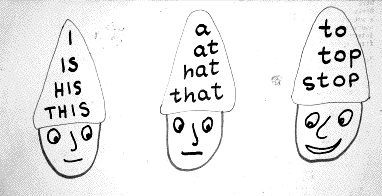
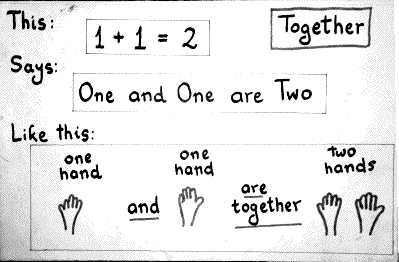
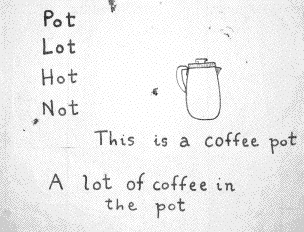
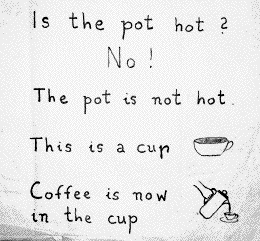
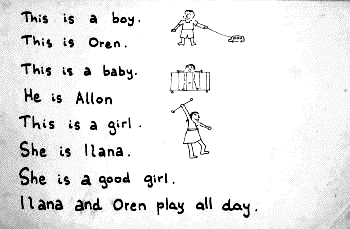

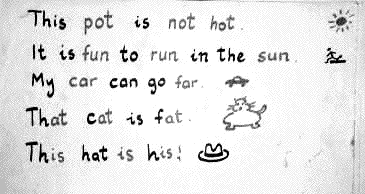
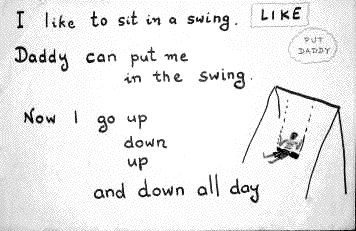
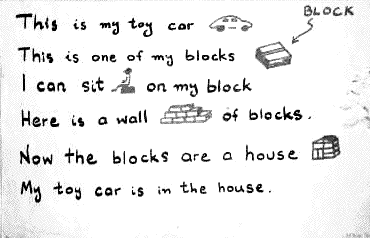
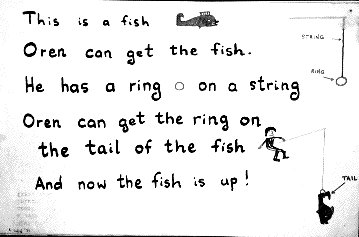
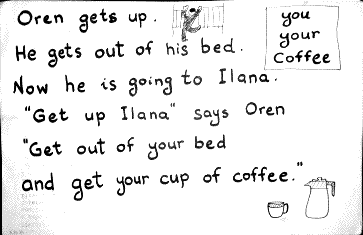
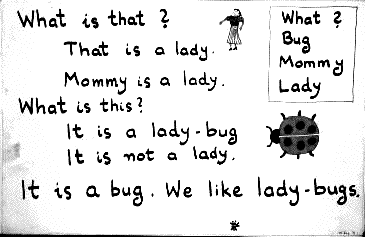
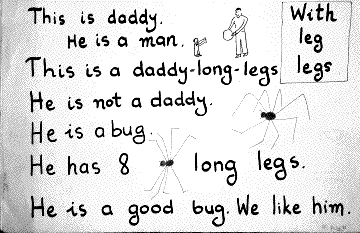
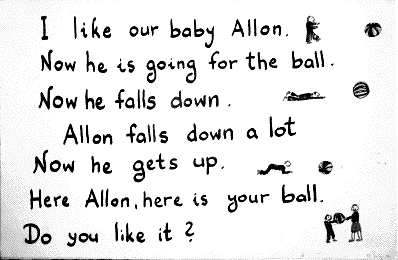
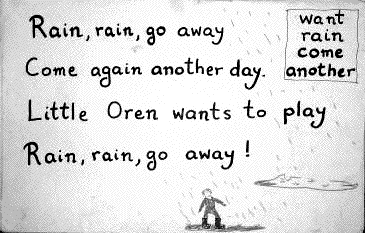
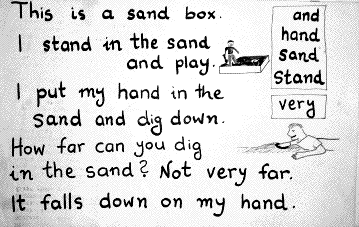
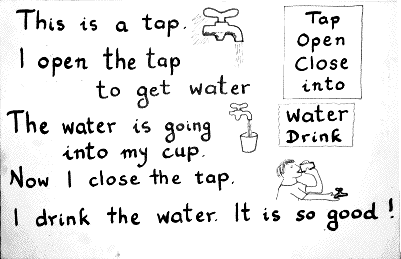
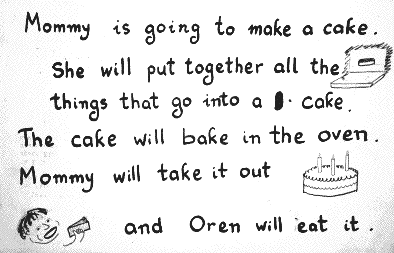
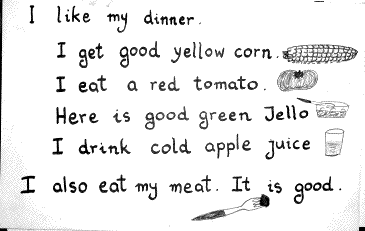
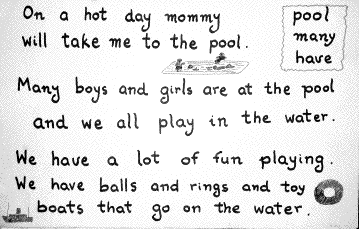
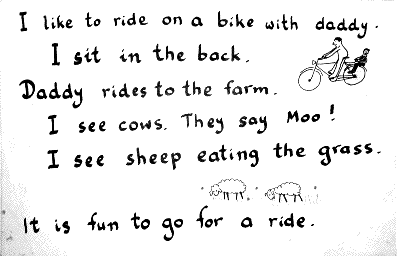
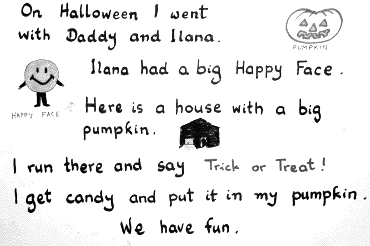

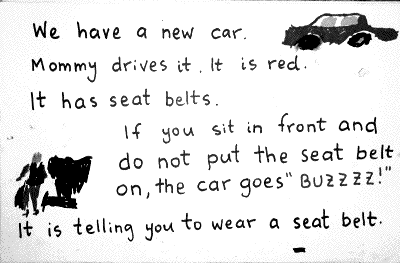
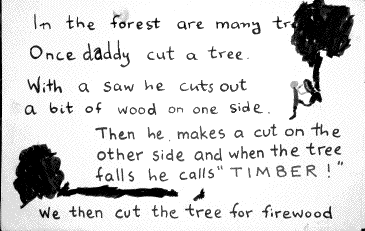
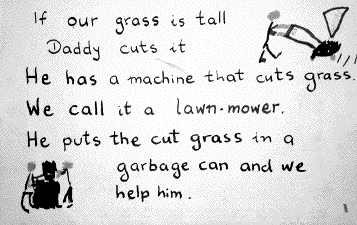
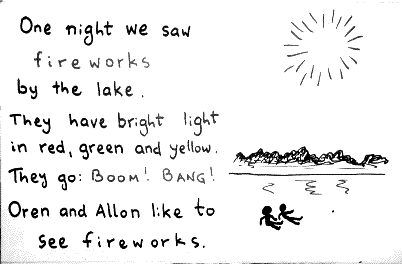
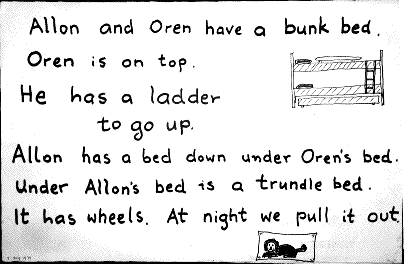
X.gif)
X.gif)
X.gif)
X.gif)
X.gif)
X.gif)
